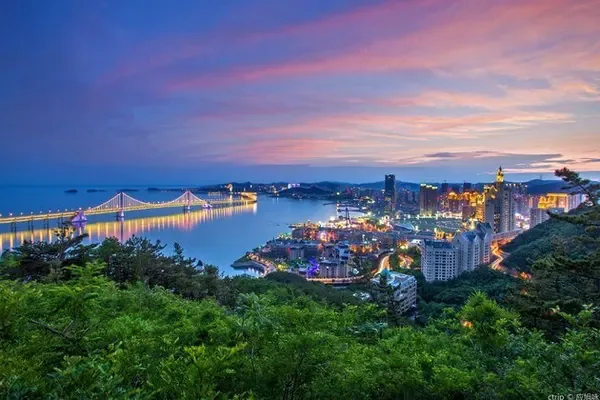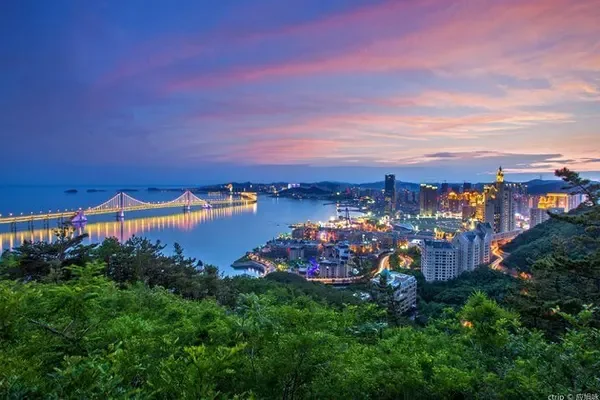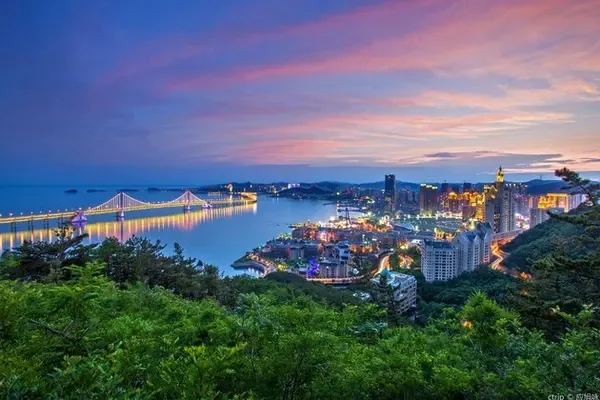China is so big, I want to visit it. Take you to a place you have been or have not been to.
The Great Wall into the Sea Shanhaiguan Old Dragon Head

Shanhaiguan is the east starting point of the Ming Great Wall. If the Great Wall is compared to a giant dragon, the old dragon head 5 kilometers south of Shanhaiguan is the place where the dragon enters the sea. It is the only section of the Great Wall in the sea.
(Shanhaiguan Customs City)

In the early Ming Dynasty, Zhu Yuanzhang sent General Xu Da to defend against the intrusion of the remnants of the Yuan Dynasty. When Xu Da surveyed the route of the old Yanshan Great Wall to the sea, he found that the Qianmin Town in Yongping Prefecture was "a mountain standing in the north, a giant sea in the south, and a kaoling in the east. In the 14th year of Hongwu (1381), Shanhaiwei was established here, and then it was built here as a pass. It is named because it leans against Yanshan Mountain in the north, Bohai Sea in the south, and the mountains and the sea. Shanhaiwei City.
(Shanhaiguan Ancient City)

In the middle and late Ming Dynasty, the focus of defense shifted from Mongolia to Jurchen, and from land to sea. In the seventh year of Wanli in the Ming Dynasty (1579), Qi Jiguang, the chief soldier of Jizhen, built a stone city of seven feet into the sea at the coast of the Great Wall. After Qi Jiguang, Sun Chengzong, Shangshu of the Ministry of War, and Yang Sichang, the governor, and other supervisors planned and strengthened it, it became a coastal defense fortress defending the capital. . At the same time, it forms horns with Jiaoshan Great Wall and Weiyuan City, guarding Shanhaiguan City.

The old dragon head continued to be built and gradually improved until the inside and outside of the Great Wall became a unity in the Qing Dynasty. The old dragon head lost its role in military defense and became a good place for emperors, generals, scholars and scholars to visit.

The current scenic spot covers an area of 600 mu and consists of 28 landscapes including Ninghai City, Chenghai Building, Stone City into the Sea, Nanhai Pass, Longwuying, and Sea God Temple, most of which are reconstructed.
Ninghai City, Garrison Department

Built in the Ming Dynasty, it is the only sea castle among the military defense buildings of the Great Wall. There is a garrison department of the military command organization in the city, stationed in three battalions of the Navy's Longwu Camp, more than a hundred warships, and as many as a thousand soldiers.
(Ming warship model)

(Longwu Camp)

The border guards in the Ming Dynasty also had the mission of garrisoning fields.
(Longwuying granary, grain processing)


The name of the garrison began in the Ming Dynasty. It was a fifth-rank military officer with more than 1,000 officials under its jurisdiction. The government office was located in Ninghai City, with four enclosed courtyards.



The back house of the garrison government office is the house of the garrison family members, commonly known as the wife's room, which is divided into an outer room and a bedroom.

In 1900, the Eight-Power Allied Forces invaded Laolongtou, and Ninghai City and the Garrison Office were destroyed.
Chenghai Building
Chenghai Tower is the highest point of Laolongtou. It was built in the early Ming Dynasty and later rebuilt into a two-story pavilion-style building with an all-wood structure. Emperor Qianlong came here four times to climb the tower and watch the sea.


Jinglutai
The only enemy tower built in the sea on the Great Wall is also called "Jinglu No. 1 enemy tower". In the 44th year of Jiajing (1565), it was built by Sun Yingyuan, the head of the Shanhaiguan Military Department. In the early years of Wanli, it was rebuilt when Qi Jiguang was renovating the Great Wall.


Qi Jiguang built 1,017 enemy towers on the Great Wall of Ji Town, which is 1,200 miles away. This is the first one, and it is called "the head of the enemy tower". Qi Jiguang personally named it "Jinglutai", and later changed it to "Jinglutai". "Halogen" refers to sea water, which is homonymous with "把" in "enemy prisoner", and Jinglu is a pun.
into the sea stone city

After passing through Jinglu Terrace, you will arrive at the Stone City into the Sea. Entering the Sea Stone City stands in the sea water and is the only section of the Great Wall at sea in my country. It was built by Wu Weizhong, a general sent by Qi Jiguang in the seventh year of Wanli in Ming Dynasty (1579). Stretching 22.4 meters into the sea, 8.3 meters wide and 9.2 meters high, it is built with nine layers of boulders.
Tanah Lot

It was built in the early Ming Dynasty. In order to pray for the safety of the sea, the people along the coast successively built the Sea God Temple, Tianhou Temple, Dragon Temple and Beihai Temple on the west side of Laolongtou. They were destroyed by the Eight-Power Allied Forces in 1900 and rebuilt in 1989. The temple is placed in the sea, and from north to south are the archway, the three-hole stone bridge, the mountain gate, the Sea God Temple, the Tianhou Palace, and the Guanhai Pavilion.







